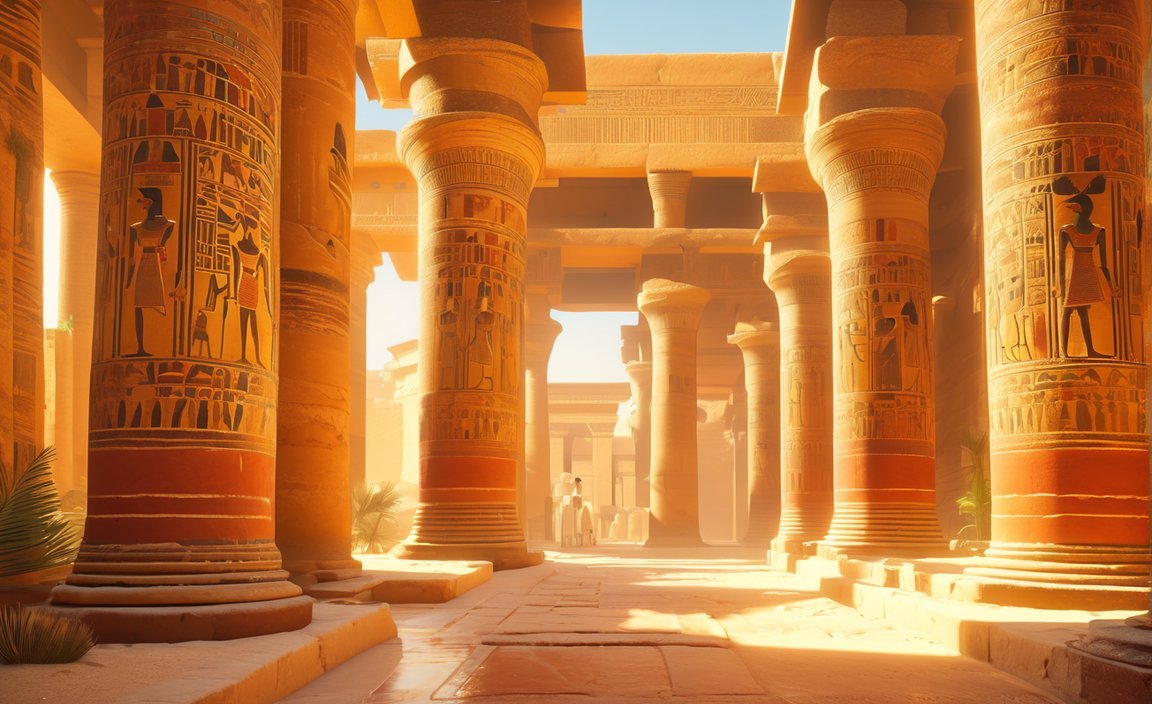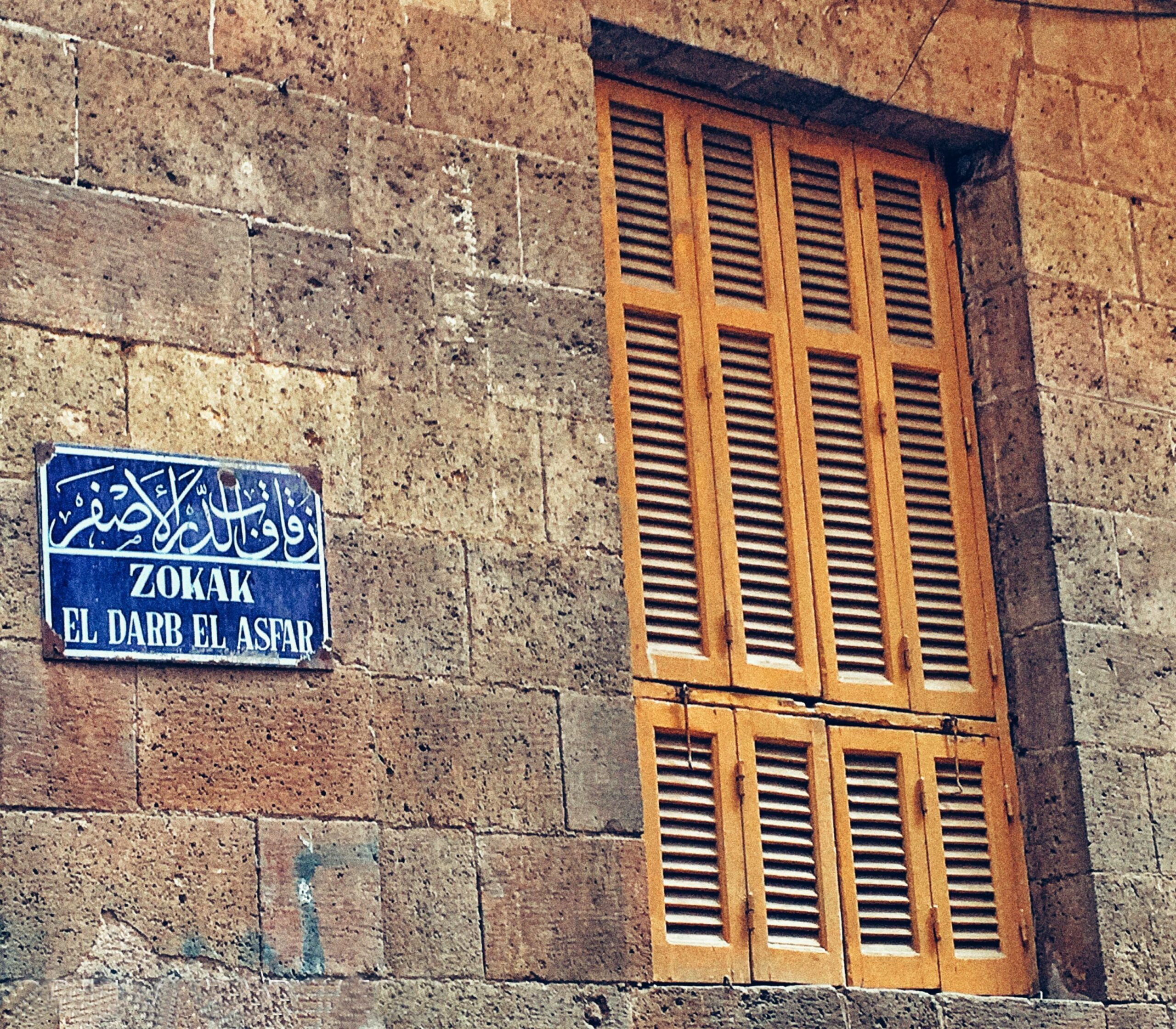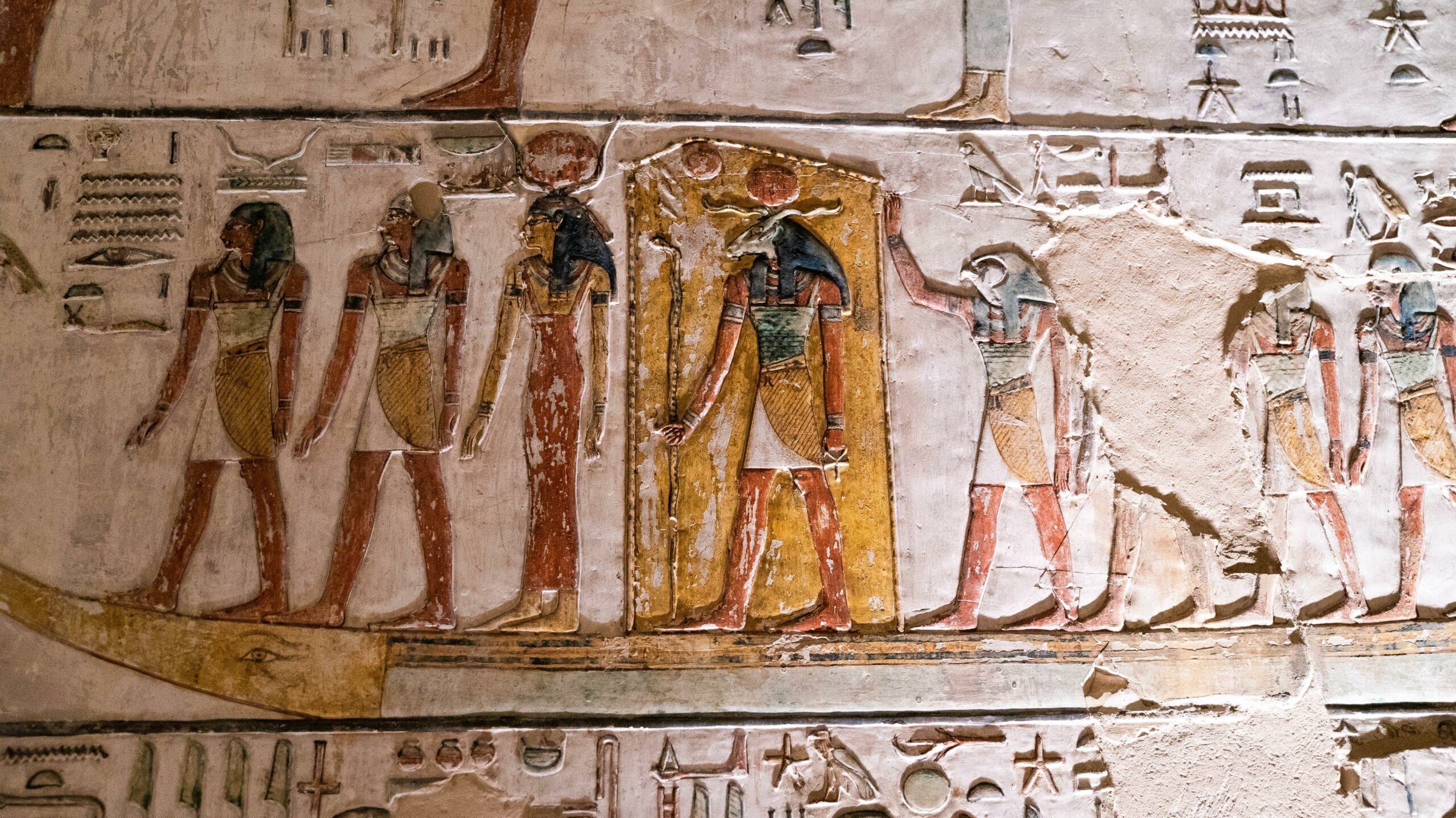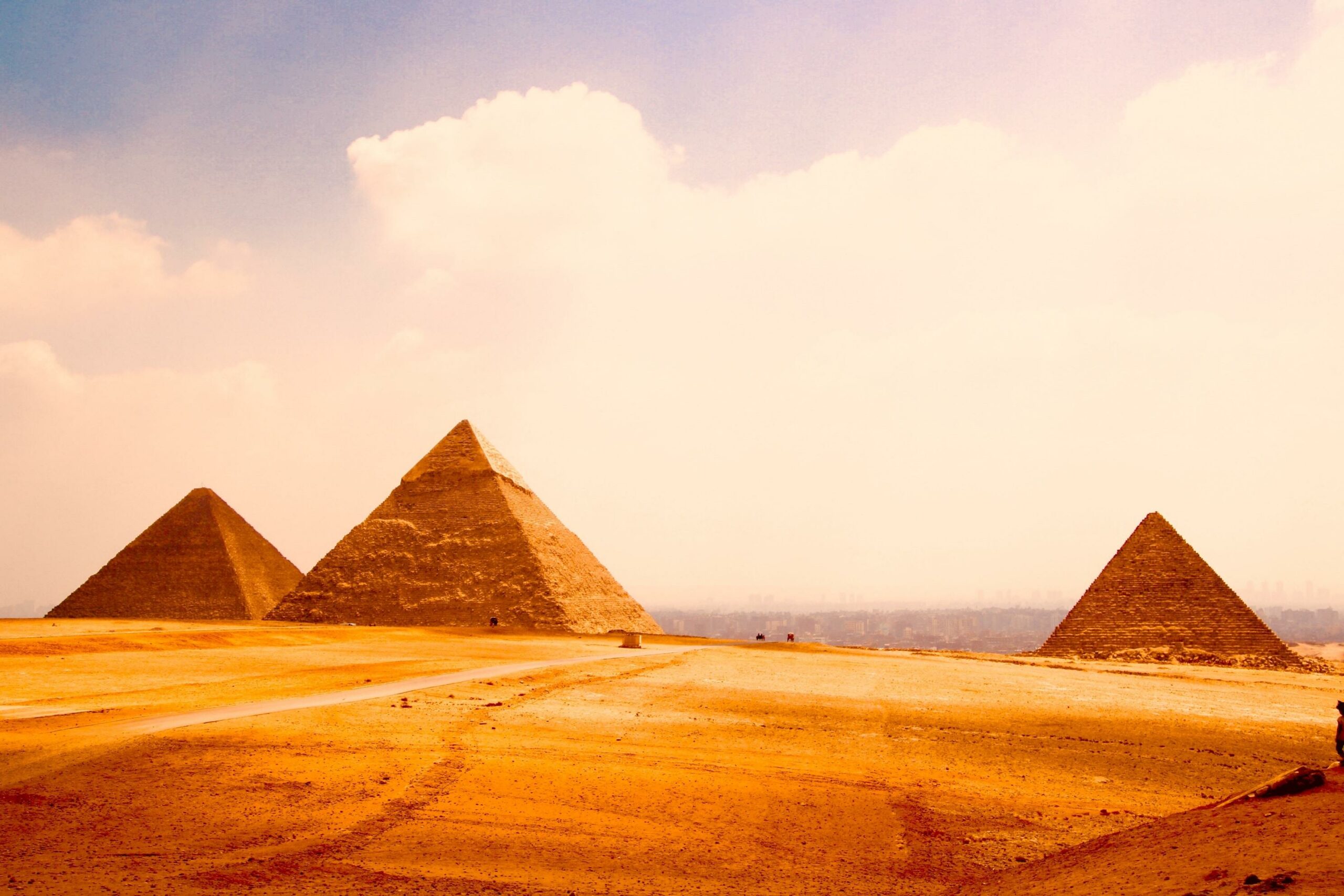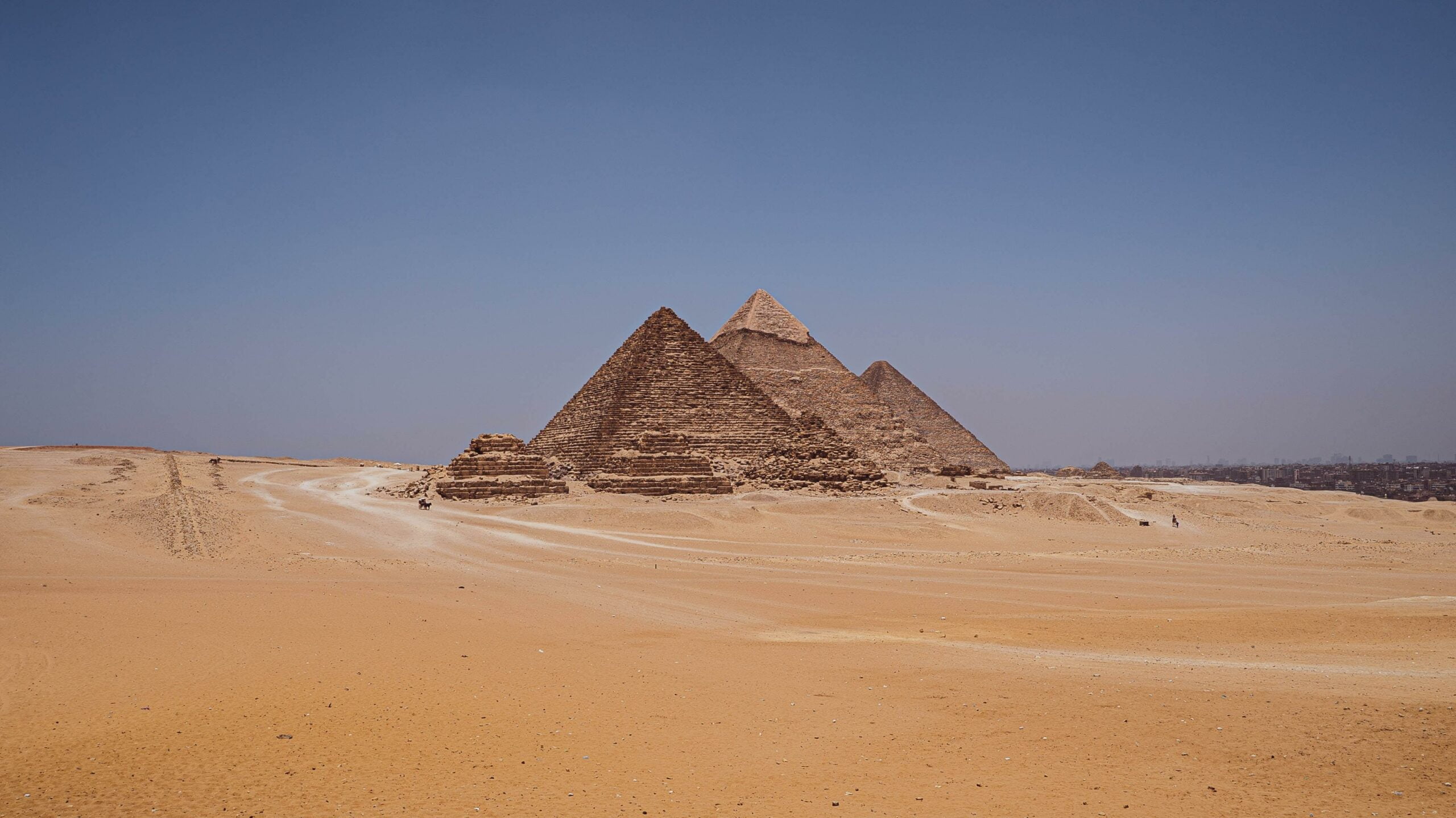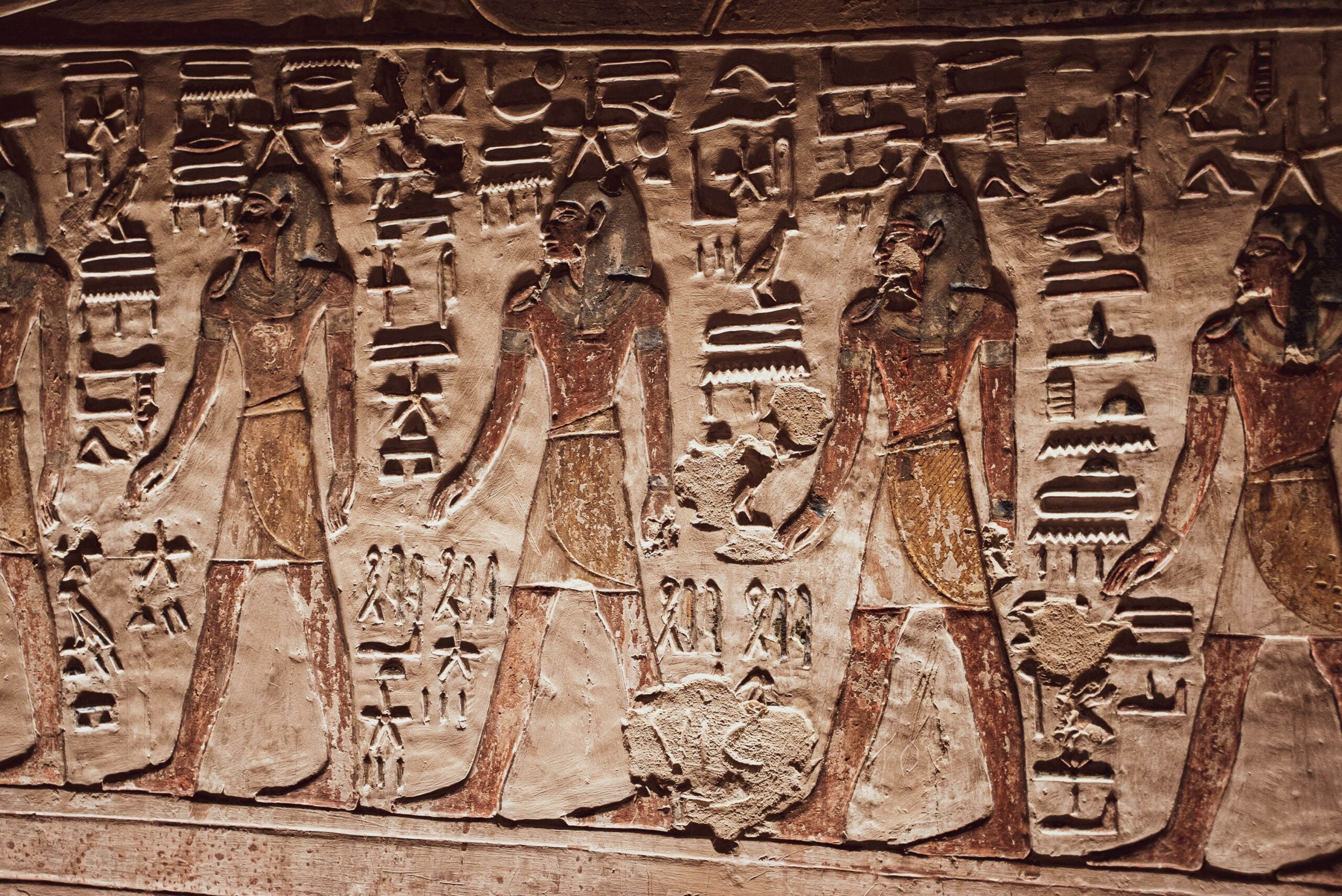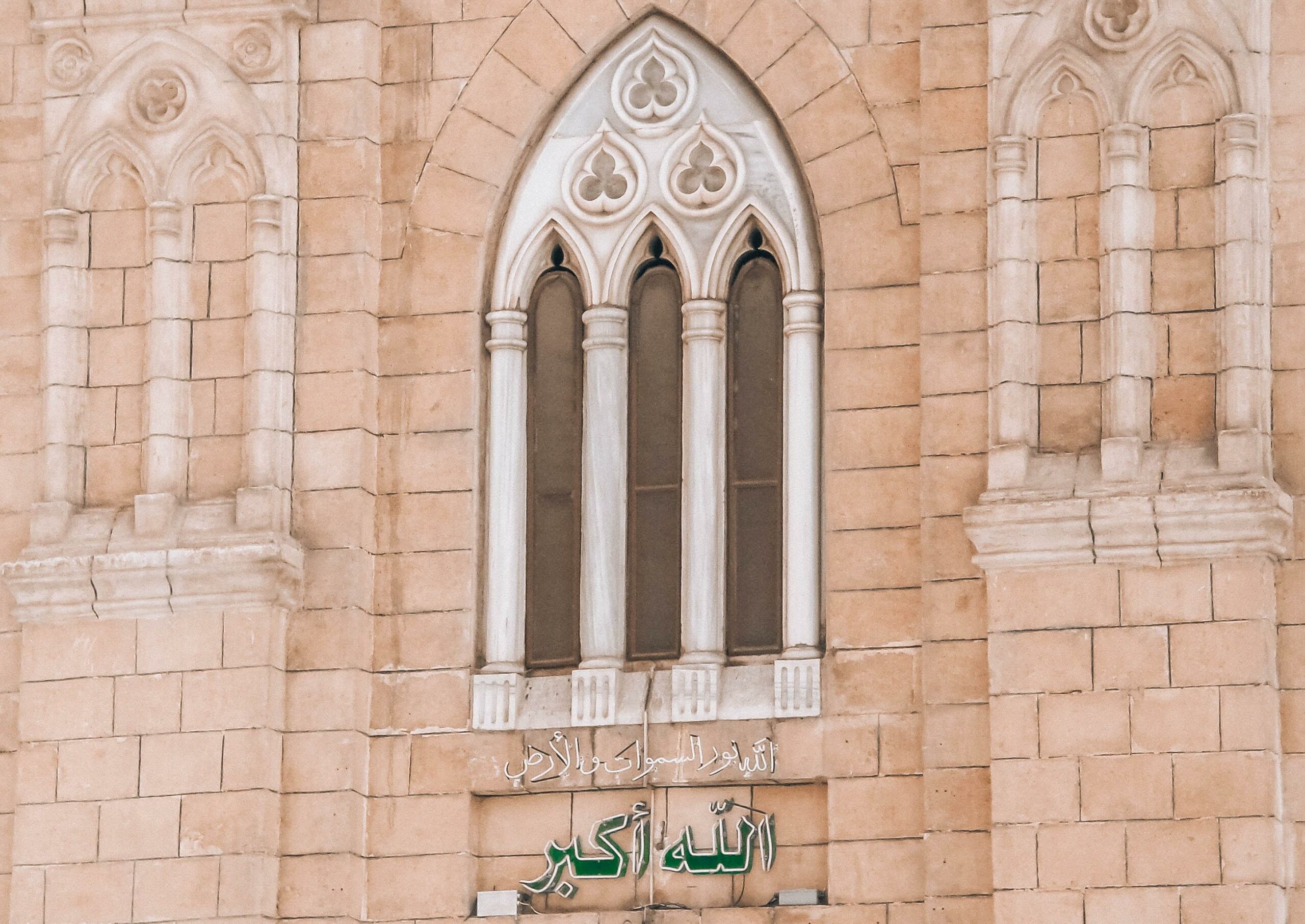Welcome to the mesmerizing world of ancient Egyptian palaces, where enigmatic splendor and captivating stories await. In this article, we embark on a thrilling journey through time to uncover the secrets and unveil the opulence of palaces in ancient Egypt. With our expert knowledge of this ancient civilization and its architectural marvels, we delve into the intricacies of these majestic structures, exploring their cultural significance and unraveling the lives of those who dwelled within their walls. Get ready to be transported to a bygone era as we unlock the mysteries of the palaces in ancient Egypt.
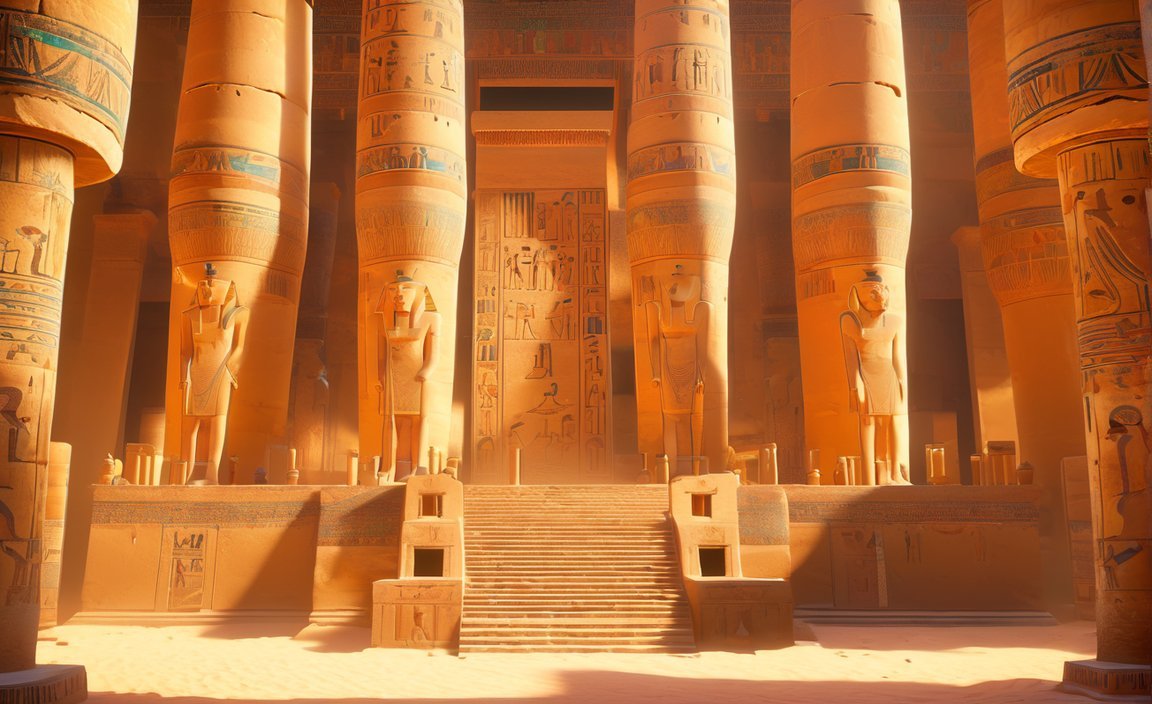
Key Takeaways:
- Palaces in ancient Egypt served as residences for pharaohs and their entourage, as well as administrative centers and temples for worshiping gods.
- Notable palaces in ancient Egypt include the 16th-century BC palace in Ballas, the Ptolemaic palace in Alexandria, the Roman palace in the Bahariya Oasis, the Ahmad ibn Tulun Palace in Old Cairo, and the Bulaq palace in Giza.
- The Malkata palace complex, built by Amenhotep III during the 14th century BC, is one of the most extensive palace complexes in ancient Egypt.
- Palaces played a crucial role in the governance and spirituality of ancient Egypt, serving as the focal points of power and administration for the pharaohs.
- Detailed information on various palaces in Egypt, their historical significance, and architectural features can be found at the History Museum and Wikipedia sources provided.
Palaces in Ancient Egypt: Cities for Kings and Gods
Ancient Egypt was a civilization marked by grandeur and opulence, and nowhere is this more evident than in its palaces. These magnificent structures served as the residences of the pharaohs, the powerful rulers of ancient Egypt, and their entourage. But palaces in ancient Egypt were more than just luxurious abodes; they were cities within themselves, where political power and religious devotion intertwined.
Pharaohs and their Palaces:
The pharaohs, considered divine figures in ancient Egyptian society, required palaces that would not only cater to their needs but also reflect their status as the highest authority in the land. These palaces were designed to accommodate both the personal lives of the pharaohs and their administrative functions.
Administrative and Ceremonial Spaces:
Palaces in ancient Egypt were divided into two main sections: one for the pharaoh’s residence and private quarters, and the other for administrative purposes. The administrative section housed the offices of the pharaoh’s advisors, scribes, and other government officials. It was here that the pharaoh made important decisions and conducted the affairs of state.
Additionally, the palace complex often included temples dedicated to the gods, further emphasizing the close relationship between the pharaoh’s authority and religious beliefs. These temples were used for rituals, ceremonies, and offerings to the deities, ensuring the prosperity of the kingdom.
Prominent Palaces in Ancient Egypt:
Throughout history, several palaces were constructed in Egypt by different rulers and dynasties. These palaces offer glimpses into the architectural prowess and lavish lifestyles of ancient Egyptian rulers. Some notable palaces include:
16th-century BC palace of an unknown king in Ballas: This palace, located in Ballas, served as the residence of a mysterious king whose identity remains unknown to this day.
Circa 2nd-century BC Ptolemaic palace in Silsila: Situated in the Silsila district of Alexandria, this palace was built during the Ptolemaic period and showcases the architectural influence of the Greek dynasty.
100 AD Roman palace in the Bahariya Oasis: Found in the El Haiz area of the Bahariya Oasis in the western desert, this Roman palace highlights the cultural exchange and influences that shaped ancient Egypt.
870 AD Ahmad ibn Tulun Palace in Old Cairo: This palace, located in al-Qatta’i, Old Cairo, was built by Ahmad ibn Tulun, the founder of the Tulunid dynasty, and reveals the unique architectural style of the Islamic period.
19th-century Bulaq palace of Ismail Pasha in Giza: Constructed by Ismail Pasha, the Khedive of Egypt and Sudan, this palace in Giza represents the fusion of Egyptian and European architectural elements.
One of the most extensive palace complexes known from ancient Egypt is the Malkata palace complex built by Amenhotep III during the 14th century BC. Though now in ruins, it once stood as a testament to royal grandeur and power.
The Importance of Palaces:
Palaces in ancient Egypt played a vital role in the governance and spirituality of the civilization. Beyond serving as the residences of the pharaohs and their courts, these palaces were the focal points of power and administration. As highly mobile rulers, pharaohs traveled not only on foreign campaigns but also throughout Egypt, using their palaces as strategic centers for both political and religious control.
With their awe-inspiring architecture, intricate designs, and symbolic importance, palaces in ancient Egypt were not simply grand buildings; they were dynamic centers of political authority and spiritual devotion.
To learn more about palaces in ancient Egypt, you can visit the following sources:
- History Museum – Egyptian Civilization: Architecture – Palaces
- Wikipedia – List of Palaces in Egypt
These sources provide detailed information on various palaces in Egypt, their historical significance, and architectural features.
Through the exploration of ancient ruins, deciphering hieroglyphic texts, and collaboration with esteemed colleagues, archaeologists have embarked on an extraordinary journey, revealing the enigmatic splendor of palaces in ancient Egypt. These majestic structures offer a captivating lens into the lives of ancient Egyptian rulers and the grandeur of their surroundings. So, let us embark on an adventure through time, as we uncover the secrets and unravel the mysteries of these remarkable palaces in ancient Egypt.
Here are a list of active internal links with their anchor text and URLs:
- Guam coordinates: Discover the precise coordinates of Guam and explore this stunning destination.
- Little Rock to Birmingham: Embark on a captivating journey from Little Rock to Birmingham and experience the charm of these two remarkable cities.
- River through Mexico: Dive into the beauty of Mexico as you explore the mesmerizing river that flows through this extraordinary country.
- In which hemisphere is Australia located: Uncover the secrets of Australia’s geographical location and find out in which hemisphere this incredible land lies.
- Architecture of Sparta: Immerse yourself in the rich architectural heritage of Sparta and delve into the wonders of its timeless structures.
- Thailand braids: Get inspired by the intricate and exquisite braids that adorn the heads of the people of Thailand.
- Virgin Islands language: Journey into the linguistic diversity of the Virgin Islands and explore the unique and captivating languages spoken in this breathtaking region.
Societal Importance and Function of Palaces in Ancient Egypt
Ancient Egyptian palaces held immense societal importance and served various functions within the civilization. These opulent structures were not only the private residences of the pharaohs and their families but also acted as administrative centers for royal administration and bureaucracy support. They played a vital role in governance, spirituality, and served as centers of political and religious control. Let’s delve deeper into the multifaceted functions and societal significance of these magnificent palaces.
Administrative Centers and Symbolic Representation
Palaces in ancient Egypt were intricately designed to accommodate the personal lives of the pharaohs while simultaneously fulfilling their administrative functions. The layout of these palaces included distinct sections for the pharaoh’s residence, administrative offices, and temples. The administrative offices housed a complex bureaucracy that facilitated the functioning of the royal court and the execution of policies. The temples within the palace complex were used for rituals, ceremonies, and offerings to deities.
These architectural marvels bore a symbolic importance as they visually represented the power and authority of the ruling pharaoh. The grandeur and splendor of the palaces communicated the wealth and status of the rulers to the people. Ancient Egyptian palaces were often depicted in tomb scenes showing the rewarding of the tomb owner by the king at a ‘Window of Appearance.’ The portrayal of these palaces in visual art further substantiates their societal importance.
Mobility and Connection
Palaces played a crucial role in the mobility of the king, who was an active ruler throughout Egypt, not just during foreign campaigns. They provided a place for the ruler to stay in different cities and regions, establishing a direct connection between the ruler and different parts of the kingdom. This physical presence of the ruler in diverse regions symbolized their authority and reinforced their position as the center of power. The mobility provided by the palaces facilitated effective governance and allowed the rulers to directly interact with their subjects, ensuring their policies and decrees reached every corner of the kingdom.
Cultural and Ceremonial Centers
In addition to their administrative functions, palaces also served as cultural and ceremonial centers. These opulent structures were the venues for both public and private ceremonial activities, including religious festivals, banquets, and celebrations. They provided a space for the pharaohs to receive diplomats, nobles, and foreigners, showcasing the wealth and prestige of the kingdom. The architecture and design of the palaces reflected the artistic and cultural tastes of ancient Egypt, making them significant cultural artifacts in themselves.
Key Takeaways:
- Ancient Egyptian palaces served as private residences for the ruling pharaohs and their families, as well as administrative centers for royal administration and bureaucracy support.
- They played a vital role in governance, spirituality, and served as centers of political and religious control.
- The grandeur and splendor of the palaces symbolized the power and authority of the ruling pharaoh.
- Palaces facilitated the mobility of the king, establishing a direct connection between the ruler and different parts of the kingdom.
- These opulent structures also functioned as cultural and ceremonial centers, hosting a variety of public and private events.
Sources:
– Palaces in Ancient Egypt: Cities for Kings and Gods (Brewminate)
– The form and Function of Royal Palaces in ancient Egypt (Academia.edu)
Cultural Significance and Symbolism
Ancient Egyptian palaces hold a deep cultural significance and are rich in symbolism. These magnificent structures were far more than mere residences for the pharaohs and their entourage. They served as centers of political and religious control, playing a vital role in governance and spirituality.
Palaces as Cultural Centers
Ancient Egyptian palaces were not just places for the pharaohs to reside; they were vibrant cultural centers that hosted various public and private events. These opulent structures were the setting for important ceremonies, rituals, and offerings to deities. The temples within the palace complex were integral to religious practices, connecting the pharaoh and his people to the divine.
Representation of Power and Authority
The awe-inspiring architecture and intricate designs of the palaces visually represented the power and authority of the pharaoh. These grand structures, adorned with luxurious decorations and fine craftsmanship, were a testament to the ruler’s wealth and status. The palaces were built with meticulous attention to detail, showcasing the wealth and sophistication of the ancient Egyptian civilization.
Connection with the Divine
The celestial alignment of the palaces and their orientation according to the cardinal points and celestial events reveal the deep connection between ancient Egyptians and the divine. The alignment of these structures with the movements of the stars and the sun demonstrated the pharaoh’s relationship with the gods and their role as intermediaries between the earthly and divine realms.
Symbolic Elements
Ancient Egyptian palaces were often adorned with symbols that held significant meaning. Hieroglyphic inscriptions depicted scenes of royal power and divine protection, further emphasizing the symbolism associated with these structures. The use of specific colors, such as red for life and black for rebirth, also conveyed symbolic messages within the palace design.
Key Takeaways:
- Ancient Egyptian palaces served as cultural and ceremonial centers, hosting various public and private events.
- These palaces visually represented the power and authority of the pharaoh.
- Celestial alignment and symbolic elements were integral to the design and meaning of the palaces.
- The temples within the palace complex played a crucial role in religious practices and connecting with the divine.
Sources:
– World History Encyclopedia
– Academia.edu
Insights into the Lives of Ancient Egyptian Rulers
Ancient Egypt has captivated the world with its majestic palaces, exemplifying the opulence and power of its rulers. These magnificent structures not only served as residences for pharaohs but also played a central role in governance and religious practices. Through the study of ancient Egyptian palaces, we gain valuable insights into the lives of these eminent rulers and their societal structure.
Palaces: The Epicenters of Power and Divine Connection
Ancient Egyptian palaces were more than just lavish residences; they were symbolic representations of the pharaoh’s authority and divine connection. As active and mobile rulers, pharaohs needed palaces that accommodated not only their personal lives but also their administrative functions. These grand structures were designed to showcase the king’s power and maintain political control.
The temples within the palace complexes played a crucial role in religious practices, connecting the pharaohs with the divine realm. Here, rituals, ceremonies, and offerings to deities took place, reinforcing the concept of divine kingship. The architectural design of these temples demonstrated the celestial alignment, drawing a direct connection between the ruler and the gods.
Unveiling the Enigmatic Splendor of Ancient Egyptian Palaces
Ancient Egyptian palaces were renowned for their awe-inspiring architecture and intricate designs. The impressive scale and skillful engineering of these structures showcased the advanced capabilities of the civilization. The grandeur of the palaces reflected the status and wealth of the pharaohs, providing an extraordinary glimpse into their opulent lives.
The palaces were often divided into sections, encompassing the pharaoh’s residence, administrative offices, and temples. This division served to harmonize the various aspects of their complex lives, ensuring a seamless blend of governance, spirituality, and cultural events. Each area within the palaces had its own significance and purpose, contributing to the overall functionality of the complex.
Societal Importance and Economic Resources
Palaces in ancient Egypt were not only political and religious centers but also demonstrated the economic resources of the civilization. They served as administrative hubs where taxes and goods were stored. Moreover, artisans and craftsmen had workshops within the palace grounds, producing luxurious goods exclusively for the pharaoh and his court.
The construction of these palaces required immense resources and skilled labor, reflecting the economic prowess of ancient Egypt. As the kingdom expanded and flourished, these grand structures served as symbols of the pharaoh’s dominion and the prosperity of the land.
Key Takeaways:
- Ancient Egyptian palaces were more than residences; they symbolized the pharaoh’s power and divine connection.
- The temples within palace complexes played a crucial role in religious practices and connecting with the divine.
- Architectural design showcased the advanced engineering skills of ancient Egypt.
- Palaces were administrative centers and showcased the economic resources of the civilization.
Sources:
– O’Neill, Barbara. “Palaces in Ancient Egypt.” Link
– “Ancient Egypt – World History Volume 1, to 1500.” OpenStax, Link
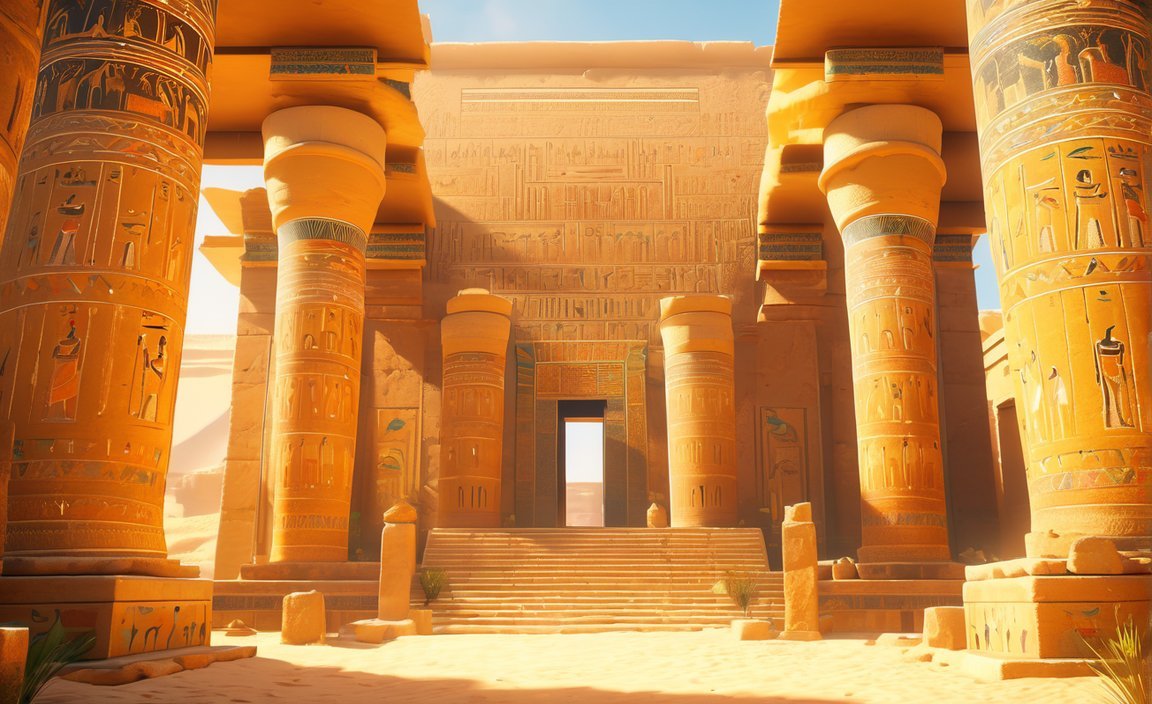
FAQ
Q1: What were the main functions of palaces in ancient Egypt?
A1: Palaces in ancient Egypt served as private residences for the ruler and their family, as well as administrative centers for royal administration and bureaucracy support. They also served as venues for both public and private ceremonial activities.
Q2: How did palaces contribute to the mobility and governance of the ancient Egyptian rulers?
A2: Palaces played a crucial role in the mobility of the king, who was an active ruler throughout Egypt, not just during foreign campaigns. They provided a place for the ruler to stay in different cities and regions, establishing a direct connection between the ruler and different parts of the kingdom.
Q3: Are there any notable palaces that still exist in ancient Egypt today?
A3: Many of the ancient Egyptian palaces are now in ruins, but there are some notable ones that still exist. One of the most extensive palace complexes is the Malkata palace complex built by Amenhotep III during the 14th century BC.
Q4: How were ancient Egyptian palaces depicted in visual art?
A4: Ancient Egyptian palaces are often depicted in visual art through tomb scenes showing the rewarding of the tomb owner by the king at a ‘Window of Appearance.’ The societal importance of palaces in ancient Egypt is evident in their depiction and representation in such artistic scenes.
Q5: Where can I learn more about palaces in ancient Egypt?
A5: To learn more about palaces in ancient Egypt, you can visit reputable sources such as the History Museum’s website on Egyptian Civilization: Architecture – Palaces, as well as the Wikipedia page on the list of palaces in Egypt, which provide detailed information on various palaces in Egypt, their historical significance, and architectural features.
- HelpCare Plus: Revolutionizing Affordable and Accessible Healthcare - December 29, 2024
- Boom & Bucket: Your Digital Marketplace for Used Heavy Equipment - December 28, 2024
- Ankle Bones Crossword Clue: Solutions, Tips & Anatomical Insights - December 28, 2024
